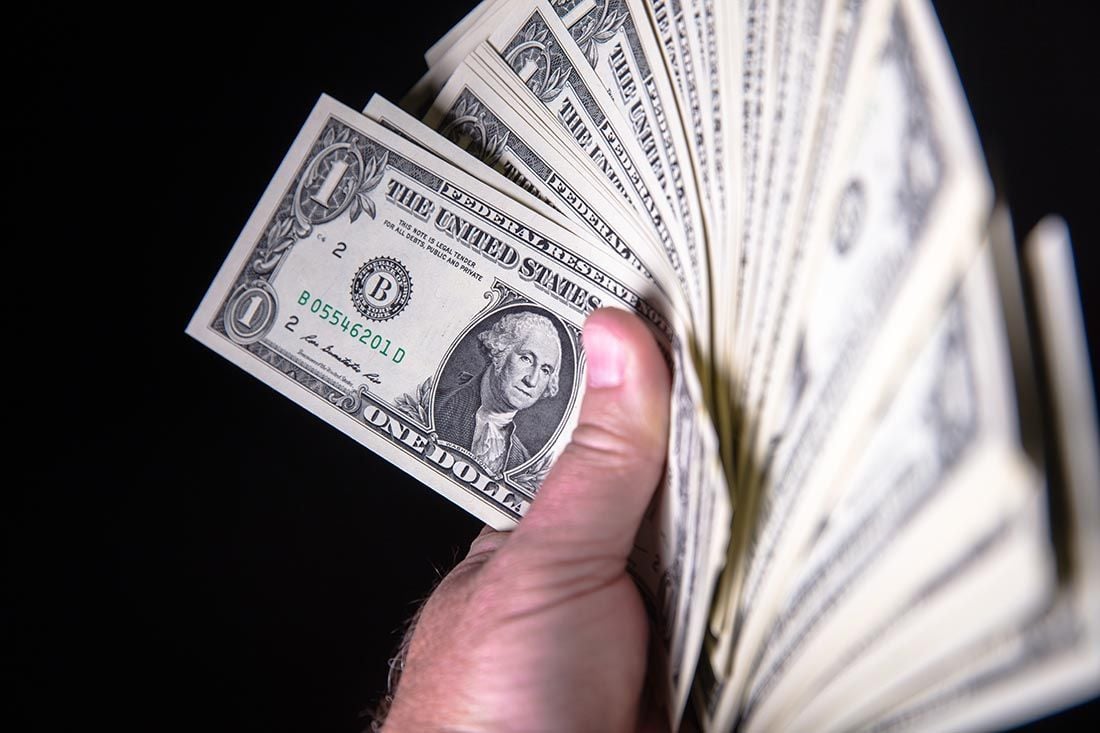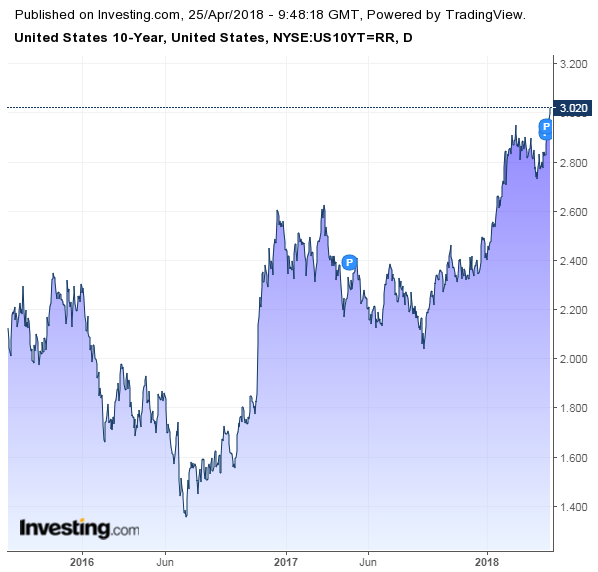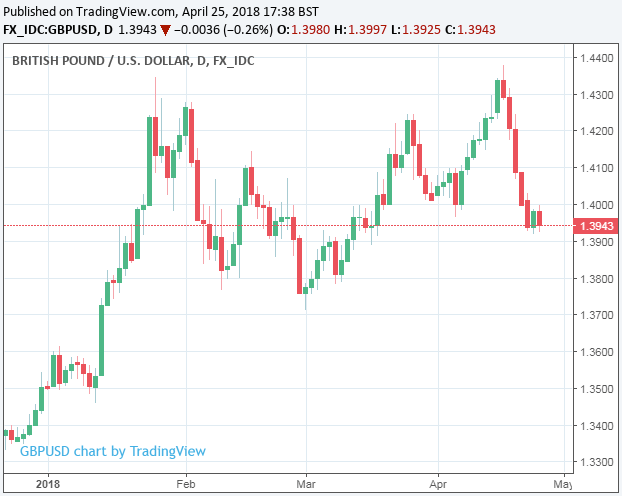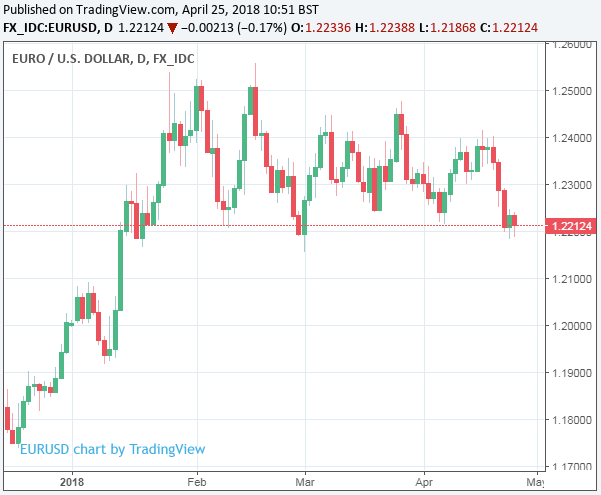US Dollar Rally Has "Further to Run" but it Won't Last for Long say ING
- Written by: James Skinner
-US Dollar rally is just a "short squeeze" say ING.
-Rally has "further to run" but will fizzle out soon enough.
-GBP/USD and EUR/USD will be tested Thursday and Friday.

© RCP, Adobe Stock
The US Dollar rose across the board Wednesday for a third consecutive session as Amrerican bond yields reached another post-crisis high although, according to some strategists, the writing is already on the wall for the Dollar rally.
US 10 year bond yields rose above the 3% threshold Tuesday for the first time since before the financial crisis and pushed higher still on Wednesday.
This has delivered a powerful shot of adrenaline into the arm of the Dollar by boosting the relative attractivness of US government bond yields over those of their international counterparts. Investors have to dump other currencies and buy the greenback in order to exploit this.
"With USD rates very firm and our call for a slightly above consensus US 1Q18 GDP figure on Friday, this dollar short squeeze could have a little further to run," says Chris Turner, head of FX strategy at ING Group.

Above: 10 Year US Government Bond Yield.
The bond market move is seen as being driven by markets fretting over an increase in the supply of US bonds, thanks to President Donald Trump's budget-busting tax reforms and other fiscal stimuli, and traders betting the Federal Reserve will step up the pace of its interes rate rises later this year.
Higher oil prices and tax cuts have, after all, augered fears of higher inflation, which already sits above the Fed's 2% target in the US. Much like all central banks, the Federal Reserve's default response to inflation is to raise interest rates.
"We doubt USD/JPY pushes above the 109.50/110.00 area," adds Turner. "Dollar Index looks biased to 91.70 over the short term, with 90.30/50 now proving support."

Above: Pound-to-Dollar rate shown at daily intervals.
The US Dollar index has risen by around 2% in the last week alone, which has helped it to whittle what was once a -5% loss for 2018 down to just -1.26%. The Pound-to-Dollar rate has also dropped nearly 2% to trade at a one month low of 1.3924 while the Euro-to-Dollar rate has dropped a near-equal measure to trade as low as 1.2166.

Above: EUR/USD rate shown at daily intervals.
Despite the US unit's swift advance during the first half of the week Turner and his colleagues at ING say it is not likely to last for very long.
"Taking a closer look at FX positioning data shows that this has all the hallmarks of being just another short USD squeeze - which have historically proven to be fairly short-lived," writes Viraj Patel, an FX strategist at ING Group, in a recent note.
Advertisement
Get up to 5% more foreign exchange by using a specialist provider to get closer to the real market rate and avoid the gaping spreads charged by your bank when providing currency. Learn more here.
Short Squeeze or Something More?
Previously, traders had spent much of 2018 building large bullish bets on the Pound-to-Dollar and Euro-to-Dollar exchange rates, as well as large bearish bets against the US Dollar in general, in anticipation Sterling and the Euro would advance further in the months ahead and the Dollar would remain submerged in a sea of red.
"There is a clear link between positioning and year-to-date performance (yes it's not rocket science!)," says Patel. "Those currencies that have had the largest bullish positioning adjustments in 2018 have also been the clear outperformers this year. Equally, the currencies with the biggest net long positions as of mid-April have also been the ones that have sold-off the most against the USD over the past week."
Those trades have proven reliable money spinners in the last year as the Euro had rose more than 15% against the Dollar in the 12 months to January and the Pound notched up a roughly 10% gain. The Dollar index, on the other hand, dropped by 10% during the year to January 2018 as the global economy and market risk appetite picked up - sending investors off in search of better returns away from the safe harbour of US assets.
These bets now look as if they are in the process of being unwoun. This means investors who were sat on big piles of Sterling and Euros, presumably in anticipation of further large swings in the exchange rates, may now be selling them and buying back Dollars. Although what matters most for the Pound and Euro relative to the US Dollar going forward, is whether or not recent price action really is a "short squeeze" or if there's something else afoot.
"Looking at previous occasions when we've seen a similar sharp squeeze in short USD positioning, we note that the follow-through into USD spot price action has been fairly short-lived. On average the BBDXY index has been 1.1% higher after two weeks - after which there is no clear pattern to which direction the USD will take," Patel writes.
Pound and Euro at Risk Thursday and Friday?
Patel and the ING team have been on the money with their calls on the Pound, Euro and US Dollar in the last year. What's more, they are currently forecasting that both the Pound and Euro will see new highs this year and that the US Dollar will resume its broad decline before long. Only time will tell if they are right although there are events in the calendar this week that could further complicate matters both Sterling and the Euro.
Thursday brings the latest monetary policy announcement from the European Central Bank. After a series of disappointments around both inflation and broader economic numbers in the Eurozone this year, which have become more apparent since the March ECB meeting, there was always a risk the central bank's language would become a bit more cautious on Thursday.
This was before the minutes of the ECB's previous meeting were released, earlier in April, detailing mounting concerns among policymakers over the strength of the Euro. As a result, there is now a genuine risk the ECB attempts to "talk down" the currency at tomorrow's meeting.
On the opposite side of the English Channel, Friday will bring the initial estimate of first quarter GDP in the UK. Similar to what has been seen in the Eurozone, a series of disappointing economic numbers over recent months and a period of inclement weather at the end of February have left economists appearing pretty downbeat in their forecasts for first quarter growth.
Consensus suggests UK GDP grew by just 0.3% during the three months to the end of March, lower than the downwardly revised 0.4% seen in the final quarter of 2017, which is enough to prompt further scrutiny of earlier claims by the Bank of England that it could raise interests further and faster than markets have given it credit for so far this year.
Confidence in the BoE's likely ability to raise interest rates again during the months ahead has been badly damaged by a steeper than expected fall in UK inflation, which dropped to 2.5% during March, and comments from BoE governor Mark Carney that appeared to suggest a rate hike next month is no longer the sure thing that it once was.
Accordingly, the market-implied UK bank rate for May 10 has fallen from 0.66% on April 03 to just 0.55% on April 25. A poor UK GDP number on Friday could see this implied bank rate dimish even further, which would be likley to have adverse consequence for the Poun-to-Dollar rate.
Advertisement
Get up to 5% more foreign exchange by using a specialist provider to get closer to the real market rate and avoid the gaping spreads charged by your bank when providing currency. Learn more here.




